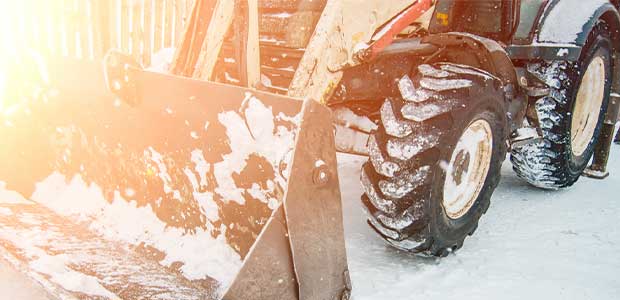
Top Winter Hazards on Construction Sites & How to Avoid Them
Winter weather can make an already dangerous job that much more hazardous.
- By Sydny Shepard
- Sep 01, 2021
Of all of the industries covered under OSHA, the construction industry continues to be one of the most hazardous a worker can find themselves in. Every day hazards include slips, trips and falls, struck-by incidents, injuries to the hands, feet and head as well as the numerous obstacles a worker must face depending on the weather.
It is no secret that workers must combat inclement weather types of all kinds, including the extremes of the summer and winter. In the summer, temperatures over 100 degrees Fahrenheit can present hazards that result in serious illnesses including heat stress, heat exhaustion and heat stroke—a serious illness that could be fatal.
While we have covered heat-related illnesses ad nauseum in this publication, it is about time that we focus in on the hazards that can be present on construction sites due to the wintery mix of weather that sites may see between the months of December, January and February.
In this article, we will explore some of the hazards that are present in the coldest months of the year and what safety professionals can do to prevent and avoid them at their facilities and on their jobsites.
Cold-related Illnesses & Injuries
Exposure to cold can range from discomfort to a potentially dangerous situation that can result in serious injury or even death. Professionals that work in cold environments risk exposure to extreme temperatures that could cause serious injuries such as chilblains, trench foot, frostbite and hypothermia.
Chilblains. Skin repeatedly exposed to cold but nonfreezing temperatures could be at risk of chilblains—which is the painful inflammation of small blood vessels. These small blood vessels may become permanently damaged by the cold, resulting in redness and itching during additional exposures.
Trench foot. Feet that are not properly protected from wet, cold conditions could suffer from a cold-related injury called trench foot. Trench foot occurs because cold feet lose heat faster than dry feet, meaning they are unable to keep warm. The body then tries to prevent more heat loss, leading the blood vessels in your feet to become constricted and the skin tissue begins to die. Symptoms of trench foot include gangrene, which is usually identified by a purple, blue or grey color of the foot.
This article originally appeared in the September 2021 issue of Occupational Health & Safety.